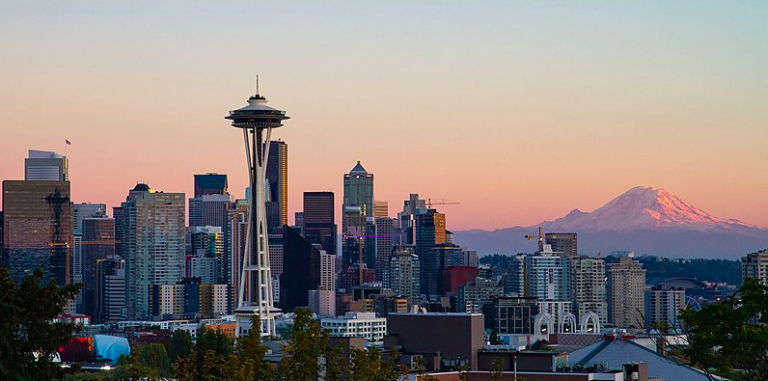Published on November 19, 2020

A growing number of politicians, urban planners and climate experts believes that 15 minutes is roughly the maximum amount of time city dwellers should spend getting to basic needs — without having to resort to a car.
In the so-called “15-minute city,” nutritious food, libraries, health care, parks, cafés and other amenities should be within a short walk, bike ride or roll from every resident’s homes, right in their own neighborhoods. Or, as Minneapolis planner Paul Mogush puts it bluntly: “Put the stuff closer together so it’s easier to get to the stuff.”
This concept is catching on around the world as a strategy to bring cities and their economies back from the COVID-19 brink, while reducing car travel — and the accompanying pollution — to help meet climate goals.
In September, in a blog post titled “Seattle’s Plan to Build Back Better During COVID-19 Recovery,” the city’s Office of Planning and Community Development announced it would consider the 15-minute city concept as a potential guiding principle for the next version of the Comprehensive Plan, the city’s urban planning scripture that sets the guidelines for what the city will look, function and feel like in the future.
Translation: Seattle could become the next 15-minute city.
Even though the 15-minute city concept might feel novel to some in North America or Europe, it is not as untested as many may think, particularly in Asia, says University of Washington Landscape Architecture professor Jeff Hou, who also directs UW’s Urban Commons Lab.
“I mean, I’m in Taipei where everything is [within] five minutes,” Hou says, his voice barely carrying over the noise of a bustling coffee shop (remember those?) in the background. “I can walk to the nearest hospital. I have at least three Starbucks or five convenience stores within five minutes of walking, and that’s not just in my neighborhood, that’s everywhere.”
Even though Seattle is a very different city than, say, Paris or London (or Taipei), Hou thinks the city is very well-positioned to become a 15-minute city. “It’s a city of neighborhoods, so there are already these clusters of services throughout the city,” he says. “It’s not like LA, where the density is so low, things are so far apart from each other that you have to drive. There is sort of an urban fabric [in Seattle].”
Continue reading at Crosscut.
Originally written by Margo Vansynghel for Crosscut.